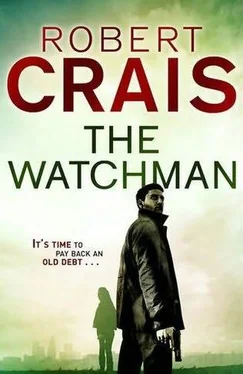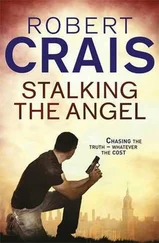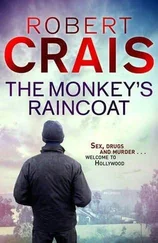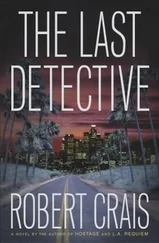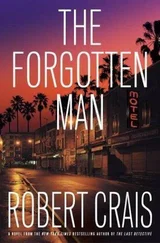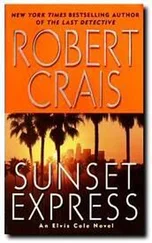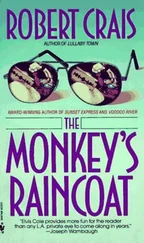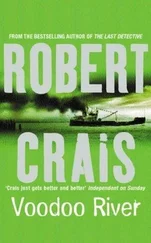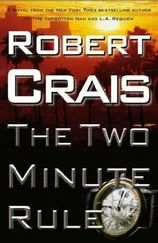A reflection moved in the glass, and Chen saw LaMolla at the other side of the lab. She had edged to the door, hiding from Harriet. LaMolla waved him over, gestured toward the gun room, then disappeared.
Chen made sure Harriet was gone, then hurried out of the lab. LaMolla was waiting at the gun room, holding the door.
She said, “Get in here. I don’t want anyone to see us together.”
She damn near pulled him off his feet, then locked the door behind him.
Chen said, “You get anything?”
LaMolla glared at him.
“If you’re setting me up, you fucker, I’ll kill you in your sleep.”
“Why would I set you up?”
“Trust no one, John. We work for the freakin’ government.”
LaMolla led him to her workbench as she told him what she found.
“The Browning was shit; it was stolen in 1982 from a Houston police officer named David Thompson. The BIN showed zip besides the Thompson hit, and nothing rang a bell.”
The ATF maintained the National Integrated Ballistic Information Network-the BIN-logging data on firearms, bullets, and cartridge casings that had been recovered at crime scenes or otherwise entered into the system. LaMolla would have run both guns through the BIN, but computer hits were rare. Chen was far more interested in LaMolla’s “bell.”
LaMolla said, “But the Taurus was different. Look at this-”
She brought him to her computer. On the screen was a magnified picture of the base of a cartridge casing. The brass casing was a ring surrounding a round silver primer. A shadowed indentation in the center of the primer showed where the firing pin had struck the primer.
“You see it? Kinda jumps out at you, doesn’t it?”
The casing looked like every other casing Chen had ever seen.
“What?”
“The pin strike. See here at the top where it’s kinda pointy? I saw that, I thought, Gee, I know that pin.”
The indentation looked perfectly round to John, but this was why firearms analysts were wizards.
LaMolla said, “Last couple of years, the Taurus was used in a couple of drive-bys and a robbery-homicide in Exposition Park. No arrests were made, but the suspects were all members of the same gang. MS-13. It’s a pass-around, John.”
A pass-around was a street gun, usually not owned by one person, but passed from user to user within the same gang.
LaMolla shook her head.
“Sorry, man-wish I could give you something more specific, but that’s it. Doesn’t seem like much.”
“It’s more than we had.”
Chen left her to it and hurried back to the glue chamber. The latent prints had developed nicely, but so many prints covered the picture John wondered if any would be useful. Prints overlaid prints, one atop the other, because that’s the way people handled things. No one ever grabbed a book or a cup or a magazine with a single firm grip; people picked something up, moved it around, passed it from hand to hand, put it down, then picked it up again, overlaying their prints until only a smudgy mess was left.
The girl’s picture was no different.
Chen vented the chamber to blow out the fumes, then removed the picture using a pair of forceps and examined it under a magnifying glass. Smudged circular patterns were heaviest on the sides of the picture where people had held it with their thumbs, but the bottom and top were heavily smudged, too, and still more smudges were randomly scattered over the picture’s glossy front. Chen saw several prints he thought would be usable, but the back of the picture was impossible to read. The white residue from the organics disappeared on the white paper.
Chen clipped the picture to a small metal frame, then gently brushed a fine blue powder over its back. When the back was covered, he used a can of pressurized air to blow off the excess powder, revealing clusters of dark blue smudges, some readable, but most not. He turned over the picture, repeated the process, then examined each of the singular prints.
Chen was pleased. He had twelve separate and singular prints, each showing defined typica. Typica were the characteristic points by which fingerprints could be identified-the loops and swirls and bifurcations that make up a fingerprint.
Chen lifted each print off the picture with a piece of clear tape, then pressed the tape onto a clear plastic backing. One by one, he set them onto a high-resolution digital scanner and photographed them. He fed the pictures into his computer, then used a special program to identify and chart the characteristic points. The FBI’s National Crime Information System didn’t compare pictures of fingerprints; it compared a numerical list of identifying characteristic points. It looked at numbers. After you had the numbers, everything else was easy.
Chen made the special request for an international database search.
John checked his watch again. Pike and the girl were sweating out in the parking lot, and he didn’t want them to sweat too long. He didn’t want Pike to lose faith in him. He wanted to come through.
Chen need not have worried.
The NCIC/Interpol logo flashed on his screen when the incoming files opened, and John Chen read the results.
John had positive matches on all twelve prints, identifying seven separate male individuals, two of whom Chen had earlier identified-Jorge Petrada and Luis Mendoza. Like Petrada and Mendoza, four of the remaining men were thugs from South America associated with Esteban Barone, but the seventh man was not.
Chen realized his mouth was dry when he had trouble swallowing.
He knew why the Department of Justice was involved.
He knew why Parker rolled.
John printed the seven files, carefully stapled them together, then cleared his computer so no one would see the downloads. He collected the fingerprint slides and the picture of the girl and sealed them in an envelope. He took the envelope and the files and walked out of the lab.
The sun was low in the western sky, searing the sky with fire. The Verdugo Mountains were purple turning to black. Chen went directly to Pike’s car, and he didn’t give a damn if Harriet saw him because he knew this was bigger than that; this was bigger than anything he had ever worked on, and maybe ever would.
Pike and the girl watched as he approached.
John Chen gave Pike the files.
“Read it.”
The girl saw the picture on the cover page and said, “That’s him! That’s the man in the pictures.”
The girl scooted close to Pike, and they read it together. Chen didn’t think about how hot she was, or how her hand rested on Pike’s thigh as she read, or fantasize about the taste of her skin. He thought only about what they were reading.
The fingerprints belonged to a man named Khali Vahnich. Vahnich was a forty-two-year-old former investment banker from the Czech Republic who had been convicted of drug trafficking before leaving that country. His activities since that time included additional drug trafficking, illegal arms sales, and known associations with terrorist organizations in Europe and the Middle East. A large black alert warning appeared in the center of the page. John remembered it clearly and knew he would never forget it. The surface roiled. A monster appeared.
It read:
ALERT: THIS MAN IS ON THE TERRORIST WATCH LIST. NOTIFY THE FBI IF YOU BELIEVE HIM TO BE IN YOUR AREA. APPREHEND BY ANY MEANS.
Pike looked up at John when he finished, and Chen would always remember his expression. Pike’s face showed nothing, absolutely nothing, but the gleaming black lenses smoldered with the fire in the sky. Chen felt so proud of Pike then, so terribly, awfully proud that this man had included him.
Pike said, “Thank you, John.”
“Whatever you need. Anything I can do, I’ll do it. I don’t care what. I’ll do it.”
Читать дальше
